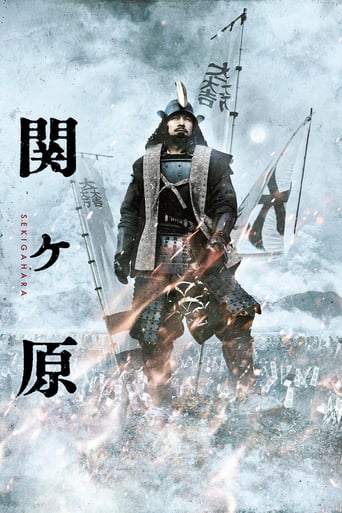nijwmzen
I expected a lot from this movie. but i was disappointed with so many aspects. you have to really pay close attention to the narrative because there were so many characters crammed in that i found it difficult to keep track of who was who.the build-up to the climax was very slow and you would need a lot of patience for a movie which is 2 hrs 30 mins. when it came, the climax was anti-climactic as far as i am concerned.the best thing about the movie is the cinematography. lush green bamboo forests, the scenery are visual delights and deserve extra stars.
BasicLogic
What we saw in this film is a guy, Sakichi, who put righteousness, justice, morality and fairness before everything else. A dreamer, a very unpractical person tried so hard to be politically correct in the chaotic Japanese feudal period. A guy with conscience and loyalty to his master, with a bigger heart and love of Japan, an idealist. But he was also so stubborn and arrogant, could never hide his despise to those who were ambitious and not loyal to their master. Such person was doomed to be a loser. His old friend reminded him: "There's no justice or righteousness once you are dead." To the film itself which was adapted from the famous Japanese author, it was not well crafted, so sometimes it just looked vague and awkward. The cinematography was good though, the mountains, the field and the lake....all of them looked just so beautiful.
WILLIAM FLANIGAN
SEKIGAHARA. Viewed in MGM National Harbor Ballroom Theater. Script = nine (9) stars; cinematography = nine (9) stars; lighting and color correction = nine (9) stars; music = nine (9) stars; sound = nine (9) stars; subtitles = eight (8) stars. In the second of a planned historical trilogy (see below), Director Masato Harada (who is also credited as writer and editor) recreates the decisive battle of 1600 at Sekigahara and events that preceded (as well as some that followed) this significant historical marker. A major turning point in Japan's history occurred when the war between most (some sat this one out or were no shows) East and West feuding clans determined Japan's (except for some regions in Kyushu) national military dictatorship (shogunate) which lasted until feudalism was abolished by the Emperor Meiji circa 1867-1868. This is a fast moving movie based on a three-volume historical novel that reimages historic events and major participants. The Director seems to have captured the essence of the voluminous source material and, unlike other movies (and TV series) that only touch (or nibble a bit) on Sekigahara, provides a comprehensive context for and retelling of the battle in it's entirety with many hundreds of extras, many dozens of speaking parts, and many dozens of horses (always mounted from the right side!). This is indeed a mega epic production that makes for spectacular audience impact! Excellent cinematography (2.35 : 1, DCP, color), lighting, and color correction plus adroit wide-screen framing add much. Score is also excellent with a blend of classical and newly composed music. Sound (5.1 surround) is blood pumping and at times close to overwhelming! Subtitles are fine although battle banners/flags are often not translated. Acting is A-list all the way with actresses holding their ground despite being considerably outnumbered by actors playing historical protagonists (see below). Harada employs voice-over narrative (which quotes the novel--see below) to help initially identify and sort out characters as well as establish/
clarify their motivations for what they are or will soon be doing. Movie samurai myths are also dispelled by channeling emerging historical research in scenes of "liquid loyalty" with combatants switching sides/clans back and forth (just follow the direction of the costumes) and defeat/withdrawal without ritual suicide (seppuku). (The samurai code of conduct (bushido) seen in movies was not even invented until 1899!) All forms of contemporary weaponry are recreated including single-shot rifles and cannons. Despite the huge cast, viewers who like to keep close tabs on leading protagonists can do so during both political and physical fighting. This is a knack the Director also demonstrated in THE EMPEROR IN AUGUST (TEIA). During a post-screening Q&A, Harada described the three major events in the history of Japan: the Sekigahara battle of October 1600; the Meiji Restoration around May 1869 (the Director's next cinematic project); and Japan's surrender in September 1945 (recreated in TEIA). Harada expressed his desire to show more female characters in his historical trilogy. While this was not realistically possible for TEIA (with the government being all male), he was able to highlight/amplify the contribution of female participates (as ninja spies, medical personnel, and fighters--yes, there were female samurai warriors) in SEKIGAHARA. Voice-over expository is often a bolt-on economic necessity when a movie has budgetary problems. Not so for SEKIGAHARA. In conversation with the Director, Harada indicated that it was always his intent to have a narrator speak text from the novel starting with his first (of 25 or so) script draft so as to capture more of the novelist's point of view and interpretation of history. There is no intermission in this 2.5 hour movie (and you may miss much if you take a break). Highly recommended for repeat viewing! WILLIAM FLANIGAN PhD


